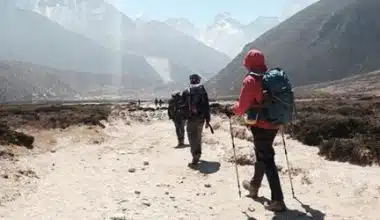Hurricane season in Puerto Rico is a topic of concern and preparation for both residents and travelers. Understanding when hurricane season in Puerto Rico occurs and how to stay safe is essential for anyone planning a visit to this beautiful Caribbean island. This write-up is detailed to give information about factors that influence hurricane season in Puerto Rico, safety measures that should be put in place, and places to stay during hurricane season in Puerto Rico.
When is Hurricane Season in Puerto Rico?
Hurricane season in Puerto Rico runs from June 1st to November 30th. This period is when the conditions in the Atlantic Ocean are most favorable for the formation and intensification of hurricanes. Warm ocean water and high relative humidity levels from the surface to the mid-levels of the atmosphere are what cause a hurricane, which is a warm-core storm that develops over tropical oceans between 5 and 20 degrees of latitude. So each traveler must choose if taking a trip to Puerto Rico during hurricane season is worth the risk. Naturally, it won’t take a massive hurricane to ruin your vacation, you’ll probably encounter days of rain.
Factors that Influence Hurricane Season in Puerto Rico
Hurricane season is influenced by various factors that contribute to the formation, movement, and intensity of tropical storms. These factors influence Hurricane Season in Puerto Rico.
#1. Sea Surface Temperatures
Warmer sea surface temperatures provide the energy needed for hurricanes to form and intensify. Higher temperatures can lead to increased tropical storm wind speeds and more favorable conditions for hurricanes in Puerto Rico.
#2. Climate Change
Climate change can influence hurricane activity by altering atmospheric and oceanic conditions. While the direct link between climate change and individual hurricanes is complex, warmer temperatures and changes in atmospheric circulation patterns can impact hurricane formation and intensity.
#3. Atlantic Multidecadal Oscillation (AMO)
The AMO is a natural climate cycle that affects sea surface temperatures in the Atlantic Ocean. During its positive phase, which can last for several decades, the AMO leads to warmer waters in the tropical Atlantic, increasing the likelihood of hurricane activity in the region, including Puerto Rico.
#4. El Niño-Southern Oscillation (ENSO)
ENSO is a climate pattern that involves the interaction between the ocean and atmosphere in the tropical Pacific. El Niño conditions, characterized by warmer-than-average sea surface temperatures in the eastern Pacific, can suppress hurricane activity in the Atlantic, including Puerto Rico. La Niña conditions, with cooler-than-average sea surface temperatures, can enhance hurricane activity.
#5. Atmospheric Conditions
Various atmospheric conditions, such as wind shear and moisture levels, can influence hurricane development and strength. Wind shear, the variation in wind speed and direction with height, can hinder or promote the formation of hurricanes. Moisture levels in the atmosphere can affect the availability of water vapor, which is a crucial ingredient for hurricane formation.
#6. Topography
The topography of Puerto Rico can influence the impact of hurricanes. Mountains and hills can disrupt the flow of winds, causing changes in the storm’s structure and potentially leading to localized variations in rainfall and wind patterns.
#7. Long-term Climate Patterns
Long-term climate patterns, such as the North Atlantic Oscillation (NAO) and the Pacific Decadal Oscillation (PDO), can influence hurricane activity in the Atlantic and Caribbean regions, including Puerto Rico. These patterns can affect atmospheric and oceanic conditions that are conducive to hurricane formation.
#8. Weather Patterns
Year-to-year fluctuations in weather patterns, such as the presence of high-pressure systems or the movement of weather fronts, can influence the track and intensity of hurricanes in Puerto Rico. These patterns can steer hurricanes towards or away from the region or affect their strength.
#9. Salinity and Ocean Currents
Changes in ocean currents and salinity levels can impact hurricane development and intensity. These factors can affect the distribution of warm and cold waters, which are vital for hurricane formation and maintenance.
#10. Hurricane Track and Steering Patterns
The track and steering patterns of hurricanes in the Atlantic can determine whether Puerto Rico will take a huge impact directly or indirectly. The presence of high-pressure systems, troughs, or ridges can steer hurricanes toward or away from the region.
Impact Affected By Hurricane Seasons in Puerto Rico
Hurricane seasons in Puerto Rico can have various effects on the island. The effects of hurricane season in Puerto Rico can be devastating, as seen in the aftermath of Hurricane Maria in 2017. The whole island of Puerto Rico is susceptible to hurricanes of any category. It doesn’t take much for the entire area to feel a hurricane’s power because the island is so small. The west coast could be safer, though, as storms frequently come from the east.
Here are some tips and information:
#1. Strong Winds and Rain
Hurricanes bring strong winds and heavy rainfall to Puerto Rico, which can cause extensive damage to infrastructure, buildings, and vegetation. These effects can lead to power outages, flooding, and the destruction of homes and businesses.
#2. Storm Surge
Hurricanes can also generate storm surges, which are abnormal rises in sea level caused by the strong winds and low atmospheric pressure associated with the storm. Storm surges can result in coastal flooding, erosion, and damage to coastal structures.
#3. Landslides and Mudslides
The heavy rainfall associated with hurricanes can saturate the soil, leading to an increased risk of landslides and mudslides in hilly or mountainous areas. These events can cause further destruction and endanger lives.
#4. Disruption of Services
During and after hurricanes, essential services such as electricity, water supply, and telecommunications can be disrupted. This can lead to difficulties in communication, transportation, and access to necessities.
#5. Impact on Agriculture
Puerto Rico’s agricultural sector can be significantly affected by hurricanes. Crops can be damaged or destroyed, leading to economic losses and food shortages. Livestock can also be at risk during extreme weather events.
#6. Health Risks
Hurricane-related damage and disruptions to infrastructure can have implications for public health. Contaminated water, limited access to healthcare facilities, and the spread of infectious diseases can be concerns in the aftermath of a hurricane.
#7. Economic Impact
The effects of hurricanes can have a significant impact on the economy of Puerto Rico. Rebuilding and recovery efforts require substantial financial resources, and the disruption of tourism and other industries can lead to job losses and reduced economic activity.
#8. Displacement and Homelessness
Hurricanes can displace residents from their homes due to damage or destruction. This can result in temporary or long-term homelessness and the need for emergency shelters.
#9. Disruption of Education
Schools and educational institutions may be damaged or closed during and after hurricanes. This disrupts the learning process for students and can have long-term effects on their education.
#10. Tourism Impact
Hurricanes can have a significant impact on Puerto Rico’s tourism industry. Travel disruptions, damage to hotels and attractions, and negative perceptions of safety can lead to a decline in tourist arrivals, affecting the local economy.
Preparation and Safety Measures for Hurricane Season in Puerto Rico
Preparation and safety measures are crucial for residents and visitors during hurricane season in Puerto Rico. By following these preparation and safety measures, residents and visitors can minimize the potential impacts of hurricane season in Puerto Rico. The severity of these effects can vary depending on the strength and path of the hurricanes that impact Puerto Rico. Efforts to prepare and mitigate the impact of hurricanes can still cause significant damage and disruption to the island.
#1. Have a Hurricane Preparedness Plan
Develop a detailed plan that includes evacuation routes, designated meeting places, and contact information for family members and emergency services. Review and practice this plan with your family before hurricane season.
#2. Create an Emergency Kit
Assemble a well-stocked emergency kit that includes essential items such as non-perishable food, water, flashlights, batteries, a first aid kit, medications, important documents, cash, and a portable phone charger.
#3. Secure Your Property
Prepare your home for a hurricane by reinforcing windows and doors, trimming trees and shrubs, securing loose outdoor items, and clearing gutters and drains to prevent flooding.
#4. Stay Informed
Monitor weather updates and alerts from reliable sources such as the National Hurricane Center and local authorities. Sign up for emergency alerts to receive timely information.
#5. Evacuation Planning
Know your zone and understand evacuation orders. If authorities issue an evacuation order, follow it promptly. Identify safe evacuation routes and have a plan for transportation if needed.
#6. Secure Important Documents
Safeguard important documents, such as identification papers, insurance policies, and medical records, in waterproof containers or by storing digital copies in a secure location.
#7. Stay Hydrated and Stock Up on Supplies
As hurricane season approaches, stock up on water, non-perishable food, medications, and other essential supplies to sustain you and your family during and after a hurricane.
#8. Stay Connected
Maintain communication with family, friends, and neighbors. Have a designated meeting place in case you get separated. Keep a battery-powered radio or NOAA weather radio for updates.
#9. Insure Your Property
Consider purchasing flood insurance and review your homeowner’s insurance policy for coverage related to hurricanes. Take pictures or videos of your property for insurance purposes.
#10. Prepare for Post-Hurricane Challenges
Be prepared for potential challenges after a hurricane, such as limited access to clean water, power outages, and disrupted transportation. Have additional supplies and resources for post-hurricane recovery.
Places to Stay During Hurricane Season in Puerto Rico
Prioritizing safety and taking into account lodgings with hurricane preparedness plans are vital when looking for the finest locations to stay in Puerto Rico during hurricane season. Although no location can guarantee complete safety from hurricanes, it is vital to stay informed, follow evacuation orders if necessary, and have a plan in place in case of severe weather conditions. Inquiring personally with the hotels or accommodations about their hurricane preparedness plans is also advised before making any reservations.
During hurricane season in Puerto Rico, these places are considered relatively safer.
#1. San Juan
The capital city of Puerto Rico, San Juan, has a well-developed infrastructure and is often well-prepared for hurricanes. It has a large number of hotels, including those with hurricane-resistant structures and backup power systems.
#2. Condado
Condado is a popular tourist area that offers a range of accommodations. Many hotels in Condado have hurricane-resistant features and are equipped to handle extreme weather conditions.
#3. Isla Verde
Isla Verde, another region with a range of hotels and resorts, is located close to the Luis Muoz Marn International Airport in San Juan. There are hurricane preparedness plans in place at several hotels in Isla Verde.
#4. Rincón
Rincón, a town on Puerto Rico’s western coast, attracts surfers and is renowned for its stunning beaches. It has historically seen fewer direct hits from hurricanes than other areas.
#5. Ponce
Ponce, located on Puerto Rico’s southern coast, is a bustling city with a diverse cultural history. Although it is not completely protected from hurricanes, it has experienced fewer direct effects than some other regions.
#6. Isla de Vieques
This small island off the east coast of Puerto Rico is known for its beautiful beaches and tranquil atmosphere. It has seen fewer direct hurricane hits historically.
#7. Cabo Rojo
Situated on the southwestern coast of Puerto Rico, Cabo Rojo offers beautiful beaches and natural attractions. In contrast to some other locations, Cabo Rojo has seen fewer direct effects.
#8. Fajardo
Fajardo, a town on Puerto Rico’s northeastern coast, is well-known for its marinas and proximity to the surrounding islands of Culebra and Vieques. Some hotels in Fajardo have hurricane-resistant structures and protocols in place.
#9. Dorado
Dorado offers upscale resorts and golf courses. It is located on Puerto Rico’s northern shore. In Dorado, some hotels have backup power systems and hurricane preparedness measures.
#10. Aguadilla
Located on the northwestern coast of Puerto Rico, Aguadilla is known for its surfing beaches and vibrant atmosphere. Although it is not resistant to hurricanes, traditionally there have been less direct effects.
What Month Do Most Hurricanes Hit Puerto Rico?
The hurricane season in Puerto Rico runs from June to November. The peak of the season usually occurs in August and September. During this time, the risk of hurricanes affecting Puerto Rico is higher. The frequency and intensity of hurricanes can vary from year to year. It’s advisable to stay updated with the latest weather forecasts.
What Is the Best Month to Go to Puerto Rico?
The best time to visit Puerto Rico is generally from December to April during the high season when the weather is pleasant and the beaches are less crowded. Mid-April to June is also a good time to visit as it falls after the busy winter season and just before the rainy summer. March to July is considered a favorable period with good weather for outdoor activities and beach visits. It’s important to check the latest weather forecasts and consider any ongoing events or festivals when planning a trip to Puerto Rico.
What Months to Avoid Puerto Rico?
The periods to avoid visiting Puerto Rico are September through November, which is considered the peak of the hurricane season. September is the riskiest month in terms of hurricanes. Mid-August through mid-October is also the time to avoid due to the higher likelihood of encountering hurricanes.
Where Do Most Hurricanes Hit Puerto Rico?
Puerto Rico has experienced numerous hurricanes throughout its history due to its location in a tropical cyclone-prone region. The exact location of most hurricanes is unknown as hurricanes can affect the entire island and its coastal areas. Residents and visitors need to stay updated on weather forecasts and local authorities’ instructions.
Are Hurricanes Bad in Puerto Rico?
Yes, hurricanes can have a significant impact on Puerto Rico. The island has a history of being affected by hurricanes, with notable examples being Hurricanes Irma and Maria in 2017. These hurricanes caused catastrophic damage and had a lasting impact on the island’s infrastructure, economy, and communities. The aftermath of these hurricanes highlighted the vulnerabilities and challenges faced by Puerto Rico in terms of disaster preparedness, response, and recovery.
Conclusion
Puerto Rico experiences hurricane season from June 1st to November 30th every year, with September being the peak of the season and the month with the most cyclone activity. However, not every year suffers the direct impact of a cyclone. Puerto Rico residents and visitors should prepare for hurricane season by developing a hurricane preparedness plan, securing property, staying informed, planning evacuations, and preparing for post-hurricane challenges. During hurricane season in Puerto Rico, prioritize safety and consider lodgings with hurricane preparedness plans. Safer locations include San Juan, Condado, Cabo Rojo, and other places, each with well-developed infrastructure, hurricane-resistant structures, and fewer direct impacts from hurricanes. Ultimately, it depends on the hurricane’s course, however due to the island’s vastness, every site is vulnerable, particularly during the busiest months of hurricane season.
- TOP 10 CAR RENTALS IN PUERTO RICO IN 2023-2024
- HOW TO RENT A CAR IN PUERTO RICO IN 2023
- DO YOU NEED A PASSPORT FOR PUERTO RICO?
- BEST TIME TO VISIT MEXICO
- WHAT IS ECOTOURISM? Types, And Characteristics






